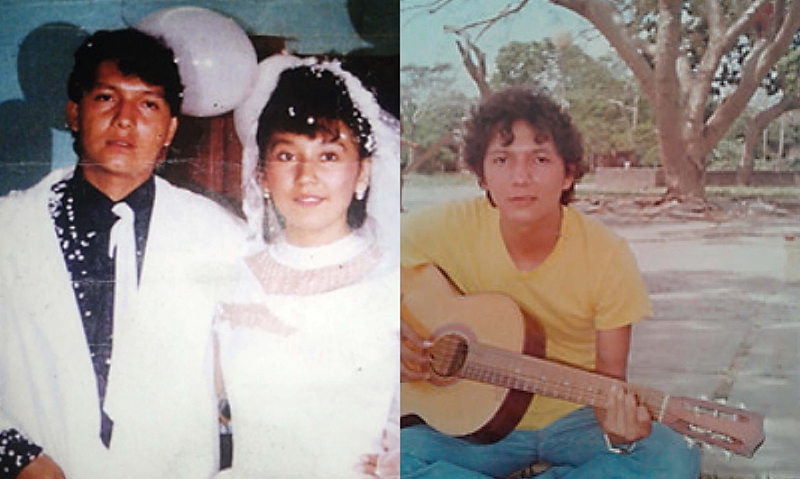
CHAGAS DISEASE

"Finally, the doctors realized Yerko had advanced Chagas disease. His heart had enlarged and had difficulty pumping blood. (...) It was too late to reverse the damage."
Yerkos’ wife, Raquel
Yerko, on his wedding day with his wife Raquel, and with his guitar, died of Chagas disease at 44 years old, Bolivia.
Yerko spent his early years in rural eastern Bolivia in a traditional house with walls made of adobe bricks and a roof of palm leaves – materials that provided perfect hiding places for vinchucas, or kissing bugs, which bite at night and transmit the parasite that causes Chagas disease. Yerko moved to the city with his family when he was just eight, but by then he already had Chagas.
Like many with this “silent” disease, it would be many more years before Yerko was diagnosed. He married, had three children, sang and played the guitar, and worked as a pharmacy clerk while studying to become a pharmacist. But his health had begun to deteriorate. By the time he was finally diagnosed, Yerko had advanced Chagas disease, and he died aged 44, leaving a huge void in his family and community.
Current treatments for Chagas disease (benznidazole and nifurtimox) are more than 40 years old, and while they show good efficacy in specific cases (those in the acute phase, and in children), the drug regimens are long and have substantial side effects, and their efficacy is difficult to assess for patients in the chronic stage. Improved treatment options are needed for all stages of Chagas infection. At the same time, access to existing treatments is poor, due to a lack of clear guidelines and policies supporting treatment options, and to the limited availability of medicines.
In 2017, the US Food & Drug Administration (FDA) approved benznidazole to treat children, the first drug ever approved by the FDA to treat Chagas disease, which will catalyse registration in endemic countries in Latin America that have not yet registered the drug (see p. 32).
Trypanosoma cruzi parasite transmitted by the bite of a triatomine vector known as the ‘kissing bug’; congenital transmission, blood transfusion, organ transplantation, or ingestion of contaminated food also possible- Endemic in 21 countries in Latin America but also in Europe, North America, Japan, and Australia
- Occurs in two phases: the acute phase, with no or unspecific symptoms in most cases, lasts for about two months after infection, and the chronic phase, where the parasites are hidden mainly in the heart and digestive muscles, which may take decades to show symptoms
- Up to 30% of chronically infected people develop cardiac problems and up to 10% develop digestive or neurological issues, or mixed alterations
- Can lead to sudden death due to cardiac complications
70MILLION
people at risk, mainly in Latin America
12,000
deaths annually
6–8MILLION
people infected
<1%OF PEOPLE
with Chagas have access to diagnosis and treatment

